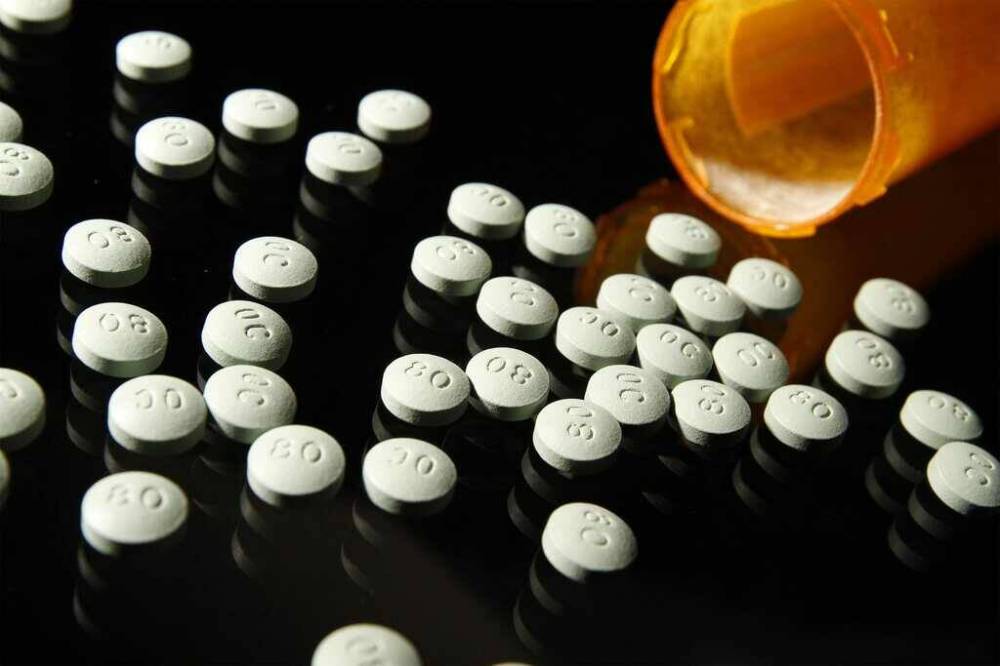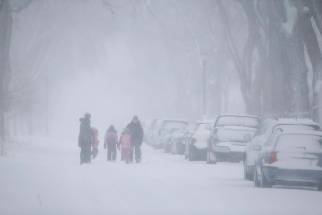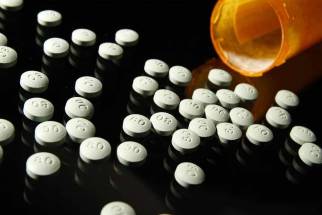Tunnel vision entrenches drug danger
Read this article for free:
or
Already have an account? Log in here »
To continue reading, please subscribe:
Monthly Digital Subscription
$0 for the first 4 weeks*
- Enjoy unlimited reading on winnipegfreepress.com
- Read the E-Edition, our digital replica newspaper
- Access News Break, our award-winning app
- Play interactive puzzles
*No charge for 4 weeks then price increases to the regular rate of $19.00 plus GST every four weeks. Offer available to new and qualified returning subscribers only. Cancel any time.
Monthly Digital Subscription
$4.75/week*
- Enjoy unlimited reading on winnipegfreepress.com
- Read the E-Edition, our digital replica newspaper
- Access News Break, our award-winning app
- Play interactive puzzles
*Billed as $19 plus GST every four weeks. Cancel any time.
To continue reading, please subscribe:
Add Free Press access to your Brandon Sun subscription for only an additional
$1 for the first 4 weeks*
*Your next subscription payment will increase by $1.00 and you will be charged $16.99 plus GST for four weeks. After four weeks, your payment will increase to $23.99 plus GST every four weeks.
Read unlimited articles for free today:
or
Already have an account? Log in here »
Hey there, time traveller!
This article was published 19/04/2022 (1335 days ago), so information in it may no longer be current.
It’s unthinkable that the provincial government would not take immediate action if a commercially sold food or beverage was contaminated and killed 407 Manitobans.
Yet 407 Manitobans died in 2021 of drug overdoses, many of them because the drugs were tainted. Some of these lives could have been saved if Manitoba provided supervised consumption sites, where there’s a chance poisoned drugs could be detected before it’s too late.
Despite millions invested in mental-health and addiction services, Manitoba's opioid-related death toll is growing

Posted:
Tracy Sanderson’s world has been torn apart by opioid addiction, even though she’s never touched the deadly drugs.
Unlike Manitoba, five other provinces have risen above the erroneous assumption that establishing sites where drugs can be tested and safely ingested amounts to an endorsement of drug abuse. Officials in these provinces followed expert advice on the most effective way to reduce the escalating number of overdose deaths. In other words, they followed the science.
Prime Minister Justin Trudeau put it this way last week in Edmonton, when he commented on the rise in drug poisoning in Alberta: “We know science-based, community-based solutions are a huge part of it; that’s why as a government we continue to push for safe consumption sites.”
The prime minister’s comments should resonate with the Progressive Conservative government of Manitoba, which has to date refused to discuss supervised consumption sites, much to the frustration of health-care workers and specialists in addictions.

It’s not as if the province refuses to help addicts. The current government has spent $58 million on mental-health and addiction services since 2019, investment that includes the establishment of four treatment clinics for people who want to quit drug abuse. They get counselling and other supports, including prescriptions for medication to dull their cravings.
During this time, however, overdose deaths in Manitoba have continued to rise, from 200 in 2019 to 372 in 2020 and 407 in 2021. Judging by the surging death toll, it’s not enough to have recovery clinics only open to users ready to quit. Manitoba needs a safe place for users to confirm the purity of their drugs with trained staff on hand in case of medical problems.
The importance of testing drugs has become increasingly important during the pandemic, when the closure of the Canada-U.S. border dried up Manitoba’s traditional supplies of illicit drugs from the U.S. In this void, some local drug sellers began mixing their versions with ingredients in dangerous combinations. In 2021, 38 people in Manitoba died after overdosing on a new combination of fentanyl and etizolam, a sedative prescribed for anxiety and insomnia.
In 2021, 38 people in Manitoba died after overdosing on a new combination of fentanyl and etizolam, a sedative prescribed for anxiety and insomnia.
No one consents to taking a potentially lethal combination of drugs. But in Manitoba, there’s no easy way to test street drugs to determine ingredients.
Since the days of former premier Brian Pallister, who displayed an unbending opposition to the concept, proposals for supervised consumption sites in Manitoba have been a non-starter with the provincial government. His successor, Premier Heather Stefanson, seems determined to continue this tunnel vision, recently refusing to respond to City Coun. Sherri Rollins’ request to discuss a harm-reduction approach that includes supervised consumption sites.
If the Manitoba PCs were open to learning more about supervised consumption sites, they would likely find the long-term goal is the same as the government-endorsed recovery clinics — help addicts get clean. The trained staff at supervised consumption sites help addicts in a long-term way; they try to build relationships of trust with the users and guide them to appropriate resources when they’re ready to quit.
Supervised consumption sites are already finding success in Saskatchewan, Alberta, British Columbia, Ontario and Quebec. In Manitoba, however, the government’s blinkered outlook needs to be widened to acknowledge there’s more than one way to help drug users.











